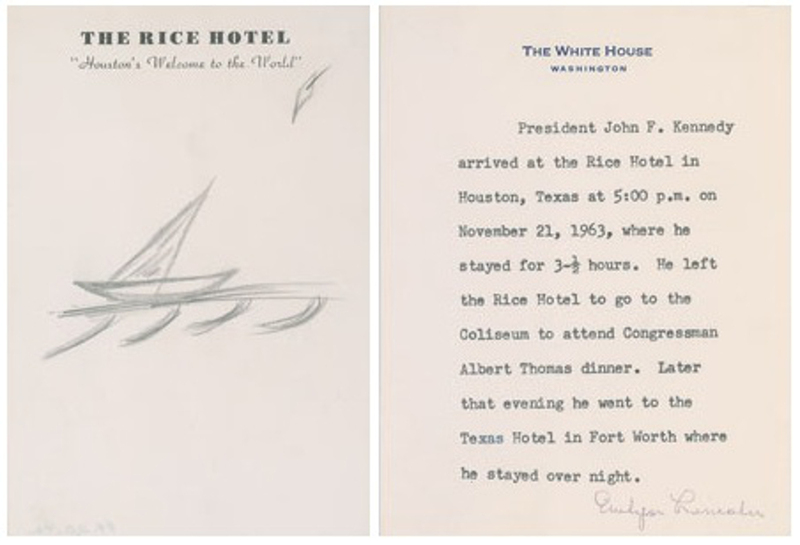The Rice Building

The Rice Building at 909 Texas Avenue sits atop one of the most historic and fascinating pieces of real estate in all of Houston. Initially set aside by Augustus and John Kirby Allen for the Republic of Texas, the site served as home of the republic’s capital building from 1837 to 1839 and then again from 1842 to 1845. Later, the old capital building was transformed into a hotel, and Anson Jones, the last president of the Republic of Texas, committed suicide there in 1858.
In 1881, a new hotel was constructed on the site, and it operated for several decades until a brick, modern structure was completed in 1913. This third building is the one that remains on Texas Avenue today, and it is listed on the National Register of Historic Places.
Opening in 1913, the Rice Hotel played host to national conventions, presidents, astronauts, and foreign dignitaries of all stripes. Known as "Houston's Welcome to the World," the hotel featured opulently appointed areas such as the Crystal Ballroom, Empire Room, Flag Room, and Roof Garden that were well-known to the city's socialites and gleefully introduced to out-of-town guests.
Times and tastes changed, however, and the increasingly unprofitable hotel was simply boarded up in the late 1970s. But, after more than 20 years of vacancy and neglect, it became one of Houston's bright examples of re-purposing, when a complicated series of public-private partnerships led to the building's successful conversion to residential apartment lofts.
Images












